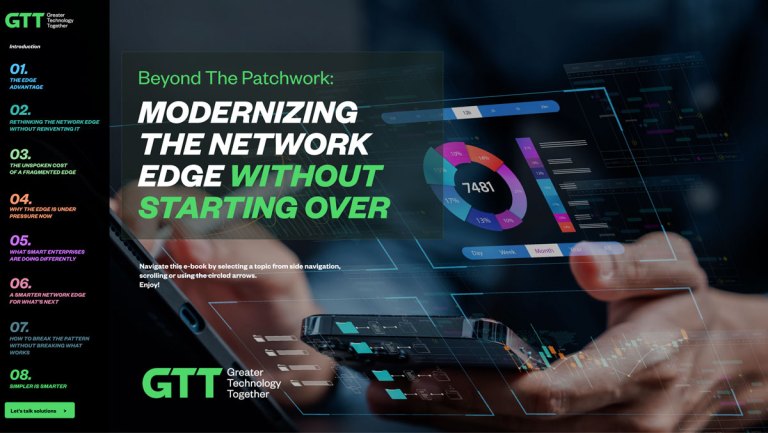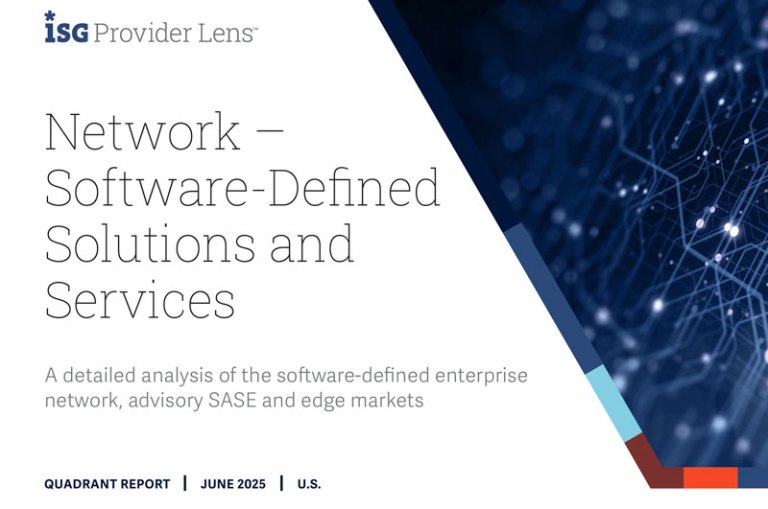Cyberthreats are more sophisticated than ever, and Distributed Denial-of-Service (DDoS) attacks are among the most disruptive. These attacks flood websites, networks, or applications with massive amounts of traffic, blocking access for real users and causing costly downtime, lost revenue, and brand reputational damage.
For businesses that depend on online services, the impact of a successful DDoS attack can be devastating. The solution? A proactive DDoS mitigation strategy that keeps your digital infrastructure secure and your business running smoothly.
But what is DDoS mitigation, and why is it important for your organization? This guide explains how DDoS attacks work, why they happenand how advanced DDoS mitigation services from GTT protect your business against these evolving threats.
Understanding DDoS Attacks
DDoS attacks are designed to disrupt normal network traffic by flooding a target with excessive data. This overload makes websites, applications or online services slow or become completely inaccessible to legitimate users. The impact can be devastating, leading to financial losses, productivity disruptions and lasting damage to your brand’s reputation.
To effectively defend against these threats, it’s essential to understand how DDoS attacks work, why they happen and where they come from.
How Do DDoS Attacks Work?
DDoS attacks overwhelm a target by bombarding it with excessive traffic, rendering it slow or completely inaccessible to real users. Attackers typically generate this traffic, known as a botnet, and target computers, servers and even IoT devices like smart cameras or wearables.
There are three main types of DDoS attacks:
- Volumetric Attacks (Layers 3 & 4): These consume the target’s bandwidth by flooding it with massive amounts of data, blocking access for real users. Examples include UDP floods and ICMP floods.
- Protocol Attacks (Layers 3 & 4): These exploit weaknesses in communication protocols, overwhelming server resources and causing system crashes. An example is a SYN flood, which manipulates the TCP handshake process to overload the target.
- Application Layer Attacks (Layer 7): These target the application layer by overwhelming specific website, service, or API functions. For example, HTTP floods mimic legitimate user requests, making them difficult to detect, and Slowloris attacks keep connections open by sending partial requests, eventually consuming server resources.
Why Do DDos Attacks Happen?
DDoS attacks are rarely random, and they’re often driven by specific motives, including:
- Hacktivism: Disrupting organizations for ideological reasons.
- Financial Gain and Extortion: Demanding payment to stop the attack.
- Competitor Sabotage: Disrupting competitors’ services for a market advantage.
- Cyber Warfare and Espionage: Disrupting infrastructure or stealing sensitive information.
Regardless of the motive, the impact can be devastating. A proactive DDoS mitigation strategy is essential to protect your business from these growing threats.
Where Do DDoS Attacks Come From?
DDoS attacks can originate from a variety of sources. Understanding how these attacks are launched is essential to identifying vulnerabilities and strengthening your defense strategy. The following are the main sources of DDoS attacks:
- Botnets: A botnet is a network of compromised devices or servers. Hackers who control them, also known as botmasters, use them to send massive traffic to a target.
- IoT (Internet of Things) Devices: IoT devices like smart cameras, smart watches, machine sensors, and telematics systems may be insecure, making them easy to compromise and use for malicious purposes like DDoS attacks.
- Cloud and Server-Based Attacks: Attackers may exploit cloud services or compromised servers to amplify attack traffic. Cybercriminals exploiting misconfigured cloud resources to generate large amounts of malicious requests is not entirely unheard of.
- DDoS-for-Hire Services: Some websites offer “stressor” or “booter” services that allow users to pay for DDoS attacks. Although these services claim to test network defenses, they are often used for illegal attacks.
Now that you know the sources of DDoS attacks, take your time to prepare and prevent them. Updating your software regularly, for instance, is a tried-and-proven strategy to avoid botnet attacks on your website.
How Do You Prevent DDoS Attacks? How DDoS Mitigation Works
DDoS mitigation is the process of detecting, analyzing, and neutralizing DDoS attacks to minimize their impact and ensure continuous service availability. Since DDoS attacks are typically sudden and unexpected, real-time detection and response are key. The process typically has these four stages:
Stage 1: Detection
Detection involves identifying early indicators of a potential DDoS attack. If you monitor your networks continuously, you might notice sudden spikes in traffic or anomalous connection patterns. Do IPS detect DDoS attacks? Yes, but with limitations. Intrusion prevention systems can analyze traffic patterns and detect suspicious activity, but are not optimized for mitigating large-scale volumetric DDoS attacks.
At this stage, you can also consider leveraging traffic management solutions that absorb and distribute excess traffic, such as content delivery networks (CDNs) or load balancers. However, if traffic volumes remain abnormally high, these systems will trigger alerts and proceed to the next stage.
Stage 2: Analysis
This step aims to determine the nature of a DDoS attack and classify the traffic. To do that, the system analyzes incoming traffic based on IP addresses, request types, protocols, and geolocation. It can also use heuristic analysis to distinguish between legitimate users and botnet-driven attacks, segmenting them and preparing for the response phase.
Stage 3: Response
The response stage focuses on neutralizing the DDoS attack and keeping legitimate traffic flowing. Some of the mitigation methods applicable in this step are:
- Rerouting Traffic: Redirecting traffic away from your network using advanced security infrastructure.
- Blackholing: Dropping all inbound traffic to a target IP address by routing it to a null route, effectively making you unreachable. We recommend this as a last resort since you block legitimate traffic during the process.
- Scrubbing: This strategy requires you to redirect your incoming traffic to a “scrubbing” location where the system will analyze it and eliminate malicious packets. Afterward, legitimate traffic is sent to its intended target network.
- Sinkholing: This technique redirects malicious traffic to a controlled server (sinkhole) to stop it from reaching your systems. The attack continues, but instead of overwhelming your infrastructure, it is diverted to the sinkhole for capture, monitoring, and analysis.
- Bot Detection: Identifying and blocking bots based on request patterns.
As we’ve seen, these DDoS response techniques work differently, and some are less effective than others. Take our advice and use multiple methods to create a layered defense system to protect your business against DDoS attacks and enhance your systems’ overall resilience.
Stage 4: Adaptation
The adaptation stage strives to improve future defense mechanisms based on previous DDoS attack data. Your team should first conduct a post-attack analysis to identify attack trends and vulnerabilities. Then, update your security policies to better recognize and block future DDoS attacks.
How Do You Prevent DDoS Attacks?
Whether you manage DDoS protection in-house or use a third-party mitigation service like DDoS Protection and Mitigation from GTT, following the best practices is essential to fortify your defenses and protect your network. These include:
- Implement Strong Network Security Measures: A robust network security foundation creates the first line of defense against DDoS attacks. Invest in firewalls to block malicious traffic before it reaches your systems and Intrusion Prevention Systems to detect and stop known attack patterns automatically.
- Leverage Traffic Analysis & Anomaly Detection: Real-time traffic analysis helps detect unusual patterns suggesting a potential DDoS attack. One key method to apply here is behavioral analysis, which establishes normal traffic patterns and flags deviations. Consider AI-driven detection tools as well. Most use machine learning (ML) to spot complex attack signatures. At the same time, add flow-based monitoring to your list, as it can examine packet headers to detect volumetric attacks.
- Use Rate Limiting & Connection Throttling: Controlling request rates and connection concurrency helps mitigate DDoS attacks by preventing resource exhaustion. Rate limiting restricts the number of requests per second from a single source, while connection throttling caps the number of simultaneous connections per IP to prevent service overload. For example, an API gateway can enforce request limits and deny excessive traffic, reducing the impact of HTTP flood attacks on your infrastructure.
- Implement Load Balancing & Anycast Routing: Distributing network traffic across multiple servers and data centers helps absorb attack volumes. Load balancing, for instance, allows you to spread traffic across many servers to prevent overload. With Anycast routing, your team can redirect traffic to the nearest data center, reducing congestion and preventing a DDoS attack.
- Block Malicious Traffic with IP Reputation & Geo-Blocking: Filtering traffic based on IP reputation and geographical origin effectively reduces DDoS risk. IP reputation databases help block known botnets, malware-infected hosts, and high-risk IP addresses associated with malicious activity. In addition, geo-blocking can restrict traffic from regions commonly linked to DDoS attack sources. However, attackers often bypass these controls using VPNs, proxies, and compromised hosts, so geo-blocking should be part of a layered security strategy rather than a standalone solution.
- Maintain Redundancy & Scalability: A redundant and scalable infrastructure ensures business continuity during DDoS attacks. Get quality cloud-based infrastructure, like auto-scales, to absorb attack traffic. Moreover, there’s no harm in creating multiple data centers to distribute traffic across multiple geographic locations. For example, the right cloud auto-scaling software can handle large spikes in traffic without performance degradation.
- Keep Software & Systems Updated: Regularly updating firewalls, operating systems, and security tools helps prevent DDoS attackers’ exploitation. Patch management lets your team fix vulnerabilities early, safeguarding your digital infrastructure. To strengthen your hardware security and prevent network-layer attacks, schedule firmware updates weekly, monthly, or quarterly based on factors such as risk level.
- Develop an Incident Response Plan (IRP): A well-defined Incident Response Plan (IRP) ensures a swift and effective response to DDoS attacks. Ideally, your plan should incorporate predefined escalation procedures for IT and security teams, automated failover systems to reroute traffic during a DDoS attack, and post-attack analysis to improve your defenses against similar threats.
How DDoS Mitigation from GTT Protects Your Business
GTT offers advanced DDoS protection and mitigation services designed to protect your business against evolving cyber threats. Here’s how GTT stands out:
Real-Time Monitoring and Detection
- Using machine learning and AI-driven detection systems, GTT provides continuous traffic inspection to detect abnormal patterns.
- Our monitoring system differentiates between legitimate users and attack traffic, preventing false positives and ensuring proactive defense.
Advanced Mitigation Techniques
- Traffic Scrubbing: Redirects incoming traffic to scrubbing centers, filtering out malicious packets.
- Sinkholing and Blackholing: Stops malicious traffic from reaching your network without affecting legitimate users.
- Bot Detection: Identifies and blocks bots based on request patterns and behavior analysis.
Global Reach and Proven Expertise
- GTT operates 10 global DDoS scrubbing centers and mitigates over 1 million cyberattacks monthly, ensuring enterprise-grade security and availability.
- Our solutions are backed by a top-tier global IP backbone, delivering secure, reliable connectivity.
Why Choose GTT for DDoS Mitigation?
- Comprehensive Protection: GTT offers layered defense mechanisms to neutralize DDoS attacks at every stage.
- Scalable Solution: Our cloud-native infrastructure scales in real time to handle the largest volumetric attacks.
- Unmatched Expertise: With 20+ years of experience and 2,000+ security certifications, GTT delivers trusted and reliable security solutions.
Secure Your Business With DDoS Mitigation From GTT
DDoS attacks can disrupt operations, damage reputations, and cause financial losses. However, you can ensure business continuity and safeguard your digital infrastructure with a proactive defense strategy and the right partner.
GTT is your trusted ally in cybersecurity. We provide advanced DDoS mitigation services to protect your network, applications, and online services. Our solutions combine real-time monitoring, AI-driven detection, and layered mitigation techniques to keep your business secure.
Ready to defend your business against DDoS attacks? Talk to our experts today and learn how you can benefit from our DDoS mitigation services.










